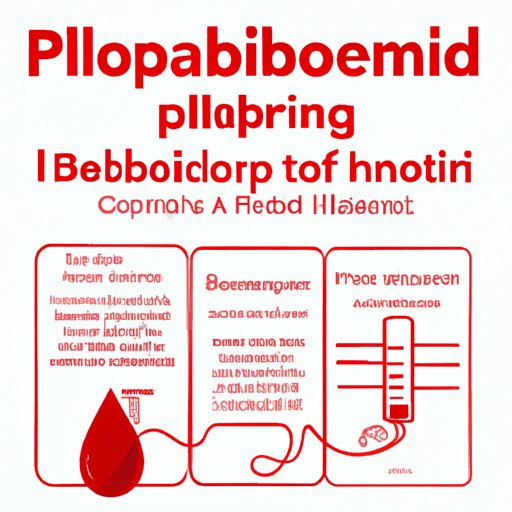How to Become a Phlebotomist: Your Comprehensive Guide
Phlebotomists are an essential part of the healthcare industry, responsible for drawing blood and collecting specimens from patients for testing. If you’re interested in a career as a phlebotomist, we’re here to help! In this article, we’ll guide you through the education, training, and skills required to become a certified phlebotomist. We’ll also explore the different sub-specializations available in this field, share personal stories from successful phlebotomists, and provide tips for choosing the best training programs.
Step-by-Step Guide
Education and Training Requirements: To become a phlebotomist, you need a high school diploma or equivalent. Most phlebotomy programs also require a criminal background check and a drug test. You can choose to attend a phlebotomy training program at a vocational school, community college, or university, where you’ll learn about anatomy, medical terminology, infection control, and venipuncture techniques. Some programs may include hands-on training, while others offer clinical externships to gain practical experience.
Certification and Continuing Education: Once you complete a phlebotomy training program, you need to pass a certification exam from a recognized organization such as the National Healthcareer Association, the American Society of Phlebotomy Technicians, or the American Medical Technologists. Certification is not mandatory to become a phlebotomist, but it can increase your job prospects and earning potential. To maintain your certification, you need to complete continuing education units (CEUs) or take the certification exam again after a certain period, usually every two to three years.
Skills and Qualities: To be a successful phlebotomist, you should possess excellent communication and interpersonal skills to interact with patients, colleagues, and healthcare providers. You should also pay attention to detail to avoid errors, follow protocols, and maintain accurate records. Other essential qualities include being organized, punctual, dependable, and adaptable to different situations.
Job Outlook: According to the Bureau of Labor Statistics, the employment of phlebotomists is projected to grow six percent from 2019 to 2029, faster than the average for all occupations. The demand for phlebotomists is expected to increase as the population ages, and more individuals require diagnostic testing and blood donations. Phlebotomists can work in hospitals, clinics, diagnostic laboratories, blood banks, and other healthcare settings, and earn an average salary of $35,510 per year.
Personal Stories
Phlebotomy can be a challenging and rewarding career, as evidenced by the personal stories of successful phlebotomists. Some phlebotomists have started their careers as medical assistants, nurses, or lab technicians before discovering their passion for venipuncture. Others have pursued phlebotomy as their first healthcare job and worked their way up to leadership positions. These phlebotomists have shared their journey and lessons learned, including the importance of practicing good communication, remaining calm under pressure, and taking pride in their work. They have also highlighted the challenges they faced, such as dealing with difficult patients, handling multiple tasks simultaneously, and addressing ethical issues. However, they have emphasized the rewards of working as a phlebotomist, such as helping patients, solving problems, and making a difference in people’s lives.
Skill Set Breakdown
Phlebotomy requires a combination of technical, physical, and professional skills. Technical skills include performing venipuncture, handling specimens, and operating equipment such as a centrifuge or a blood bank refrigerator. Physical skills include standing for long periods, lifting heavy objects, and maintaining a sterile environment. Professional skills include communicating clearly and effectively with patients, colleagues, and supervisors, respecting privacy and confidentiality, and following safety protocols and quality standards. To develop and improve these skills, phlebotomists can participate in continuing education programs, online courses, or workshops offered by professional organizations.
Specialization Options
Phlebotomy offers several specialization options, allowing phlebotomists to focus on specific patient populations or testing areas. For example, pediatric phlebotomists draw blood from children, requiring special techniques and communication skills. Geriatric phlebotomists draw blood from elderly patients, who may have fragile veins or comorbidities. Research phlebotomists collect blood samples for clinical trials, following strict protocols and documentation. Other phlebotomy specializations include donor phlebotomist, travel phlebotomist, mobile phlebotomist, and supervisor phlebotomist. When choosing a phlebotomy specialization, consider your interests, experience, and job market demands.
Top Training Programs
Phlebotomy training programs are available at various institutions, so choosing the right one can be overwhelming. We’ve researched the top phlebotomy training programs in different geographic regions to help you make an informed decision. These programs have been ranked based on factors such as accreditation, curriculum, faculty, student support, and placement rates. Check them out!
Conclusion
Becoming a phlebotomist can be an exciting and fulfilling career choice, offering ample job opportunities, excellent pay, and the chance to make a difference in people’s lives. To become a certified phlebotomist, you need to complete a phlebotomy training program, pass a certification exam, and maintain your certification through continuing education. Developing the necessary skills and qualities, choosing a specialization, and selecting the right training program can all help you succeed in this field.
